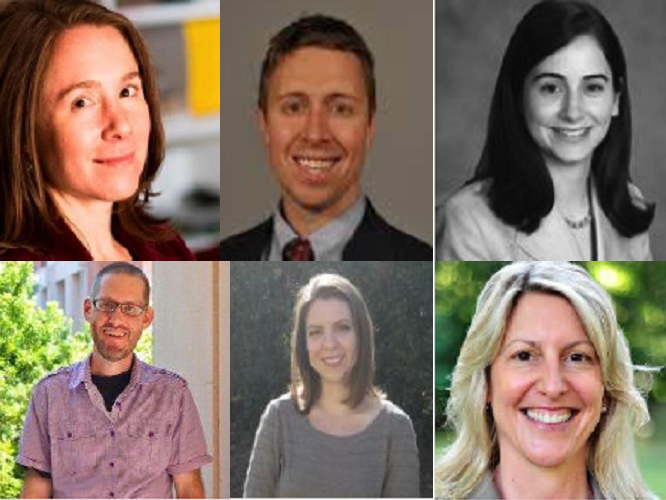
Blog
The Branching Science Career Pipeline: Thinking Outside the “Academia” Box

When asked about job placements post-graduation, many professors talk only about students with coveted postdoc or faculty positions, and not the other students who have landed in what might be called the "black box" of non-traditional careers. Non-academic jobs account for about 61 percent of STEM Ph.D. career outcomes, yet the lack of departmental and advisor support, along with the need to carve your path, continues to make pursuing these careers a challenge.
This prevailing attitude towards careers outside of the academy prompted the Graduate Chemistry Council to host the inaugural spring event, “Non-Traditional Careers for STEM Ph.D.s,” featuring panel talks and structured networking. The diversity of our student attendees (40 attendees from 10 STEM departments) testified to the need for diversifying career development opportunities to match the branching science career pipeline.
The panel, all shown above (clockwise from top left), included:
- Robin Smith, Ph.D. (Evolutionary Biology), a science journalist
- Kevin McGowan, Ph.D. (Chemistry), a consultant
- Andrea Sherk, Ph.D. (Pharmacology), a patent agent
- Laura Kiefer, Ph.D. (Biochemistry), a patent attorney
- Sarah Gemberling, Ph.D. (Molecular Cancer Biology), a regulatory affairs coordinator
- Joshua Hall, Ph.D. (Microbiology and Immunology), a science outreach and educational program director
These professionals shared their career journeys, sprinkled pieces of thoughtful advice, and made it clear that non-traditional career trajectories aren’t often linear. Dr. Kiefer, for example, told her story of transitioning from a postdoctoral fellow at a large pharmaceutical company to starting her own law firm. Several other panelists stressed how participants should “seek mentors from non-traditional careers.” Dr. Hall also described how his “sticky notes of likes and dislikes about day-to-day graduate school life” critically shaped his job-search during his postdoc. (Editors' note: Working on an individual development plan, as Courtnea Rainey has written about for this blog, or visiting the Versatile PhD website are great ways to start).
The other panelists agreed that graduate students should “find what you enjoy most about the Ph.D. process” and then transform those joys into a career. Offering his own career trajectory as another example, Dr. McGowan described how working with companies to take catalysts from the bench to the manufacturing floor was the most enjoyable part of his graduate work. He has transferred this interest into a consulting career.
The event’s second half consisted of 15-minute “speed-dates” with our professionals, where the attendees were divided into career interest groups. These structured networking circles facilitated conversation so well that many were seen in animated discussions post-event. The speakers equally valued this opportunity. Science journalist Dr. Smith said “she even got a story or two” as she met graduate students. With the success of this event, we hope to make it an annual one and spin off a “Mentoring over Coffee” program with non-traditional career professionals in the fall.
Author

Zeenat Razvi
Graduate Student, Chemistry
Zeenat Razvi is a second-year graduate student in the Chemistry Department. She studies the chemical and physical properties of small molecules that can work synergistically with biological metals, like copper, to kill pathogenic bacteria and fungi.

Samuel Alvarez
Graduate Student, Chemistry
Samuel Alvarez is a third year graduate student in the chemistry department. He studies the growth mechanism of different metal nanowires in situ in order to understand their mechanism of self-assembly.

Ryenne Ogburn
Graduate Student, Chemistry
Ryenne Ogburn is a third-year graduate student in the Chemistry Department. She identifies protein-drug interactions and proteins involved in disease states through energetics based proteomic approaches.